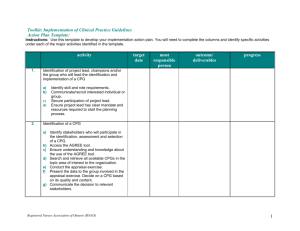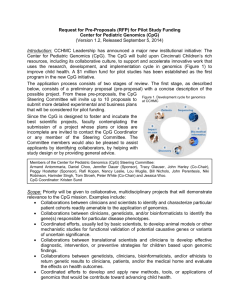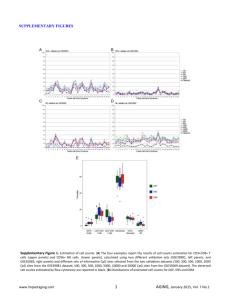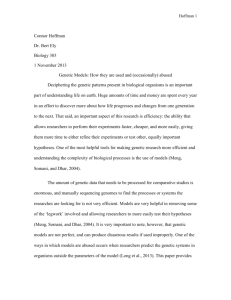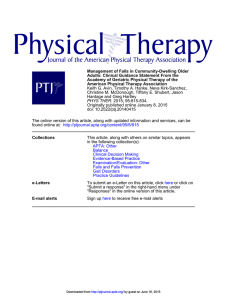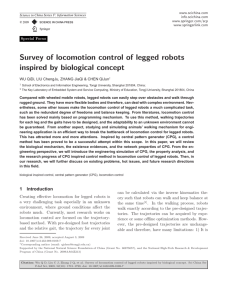Evolutionary fate of CpG and CNG clusters in mammals
advertisement
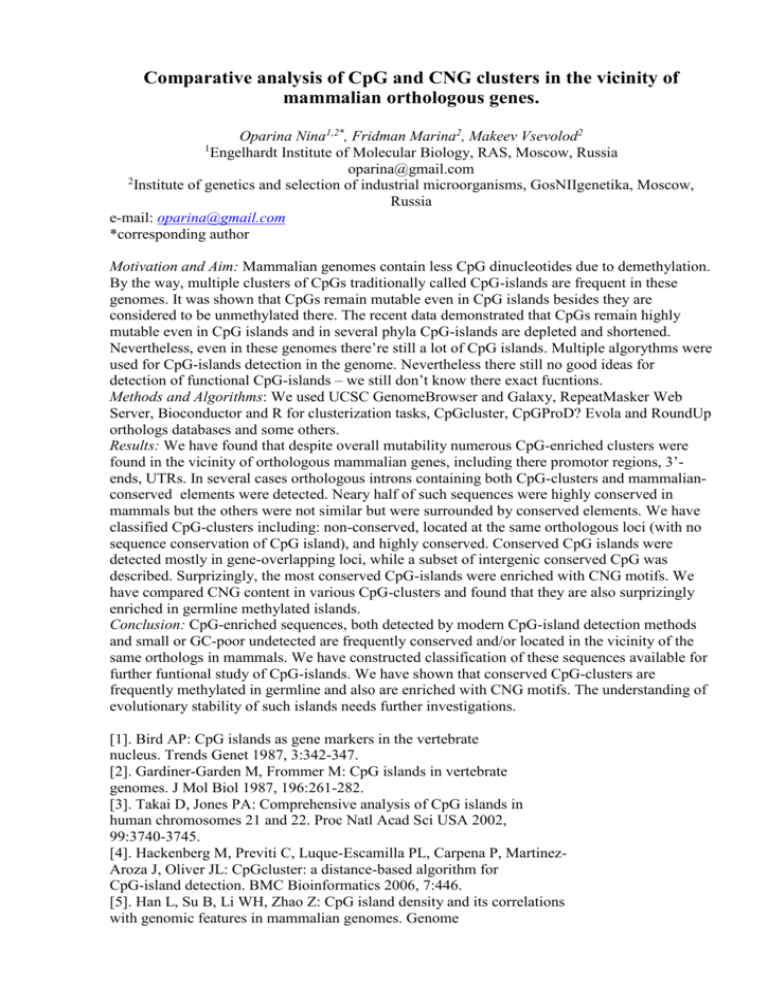
Comparative analysis of CpG and CNG clusters in the vicinity of mammalian orthologous genes. Oparina Nina1,2*, Fridman Marina2, Makeev Vsevolod2 1 Engelhardt Institute of Molecular Biology, RAS, Moscow, Russia oparina@gmail.com 2 Institute of genetics and selection of industrial microorganisms, GosNIIgenetika, Moscow, Russia e-mail: oparina@gmail.com *corresponding author Motivation and Aim: Mammalian genomes contain less CpG dinucleotides due to demethylation. By the way, multiple clusters of CpGs traditionally called CpG-islands are frequent in these genomes. It was shown that CpGs remain mutable even in CpG islands besides they are considered to be unmethylated there. The recent data demonstrated that CpGs remain highly mutable even in CpG islands and in several phyla CpG-islands are depleted and shortened. Nevertheless, even in these genomes there’re still a lot of CpG islands. Multiple algorythms were used for CpG-islands detection in the genome. Nevertheless there still no good ideas for detection of functional CpG-islands – we still don’t know there exact fucntions. Methods and Algorithms: We used UCSC GenomeBrowser and Galaxy, RepeatMasker Web Server, Bioconductor and R for clusterization tasks, CpGcluster, CpGProD? Evola and RoundUp orthologs databases and some others. Results: We have found that despite overall mutability numerous CpG-enriched clusters were found in the vicinity of orthologous mammalian genes, including there promotor regions, 3’ends, UTRs. In several cases orthologous introns containing both CpG-clusters and mammalianconserved elements were detected. Neary half of such sequences were highly conserved in mammals but the others were not similar but were surrounded by conserved elements. We have classified CpG-clusters including: non-conserved, located at the same orthologous loci (with no sequence conservation of CpG island), and highly conserved. Conserved CpG islands were detected mostly in gene-overlapping loci, while a subset of intergenic conserved CpG was described. Surprizingly, the most conserved CpG-islands were enriched with CNG motifs. We have compared CNG content in various CpG-clusters and found that they are also surprizingly enriched in germline methylated islands. Conclusion: CpG-enriched sequences, both detected by modern CpG-island detection methods and small or GC-poor undetected are frequently conserved and/or located in the vicinity of the same orthologs in mammals. We have constructed classification of these sequences available for further funtional study of CpG-islands. We have shown that conserved CpG-clusters are frequently methylated in germline and also are enriched with CNG motifs. The understanding of evolutionary stability of such islands needs further investigations. [1]. Bird AP: CpG islands as gene markers in the vertebrate nucleus. Trends Genet 1987, 3:342-347. [2]. Gardiner-Garden M, Frommer M: CpG islands in vertebrate genomes. J Mol Biol 1987, 196:261-282. [3]. Takai D, Jones PA: Comprehensive analysis of CpG islands in human chromosomes 21 and 22. Proc Natl Acad Sci USA 2002, 99:3740-3745. [4]. Hackenberg M, Previti C, Luque-Escamilla PL, Carpena P, MartinezAroza J, Oliver JL: CpGcluster: a distance-based algorithm for CpG-island detection. BMC Bioinformatics 2006, 7:446. [5]. Han L, Su B, Li WH, Zhao Z: CpG island density and its correlations with genomic features in mammalian genomes. Genome Biol 2008, 9:R79. [6]. Jiang C, Han L, Su B, Li WH, Zhao Z: Features and trend of loss of promoter-associated CpG islands in the human and mouse genomes. Mol Biol Evol 2007, 24:1991-2000.
